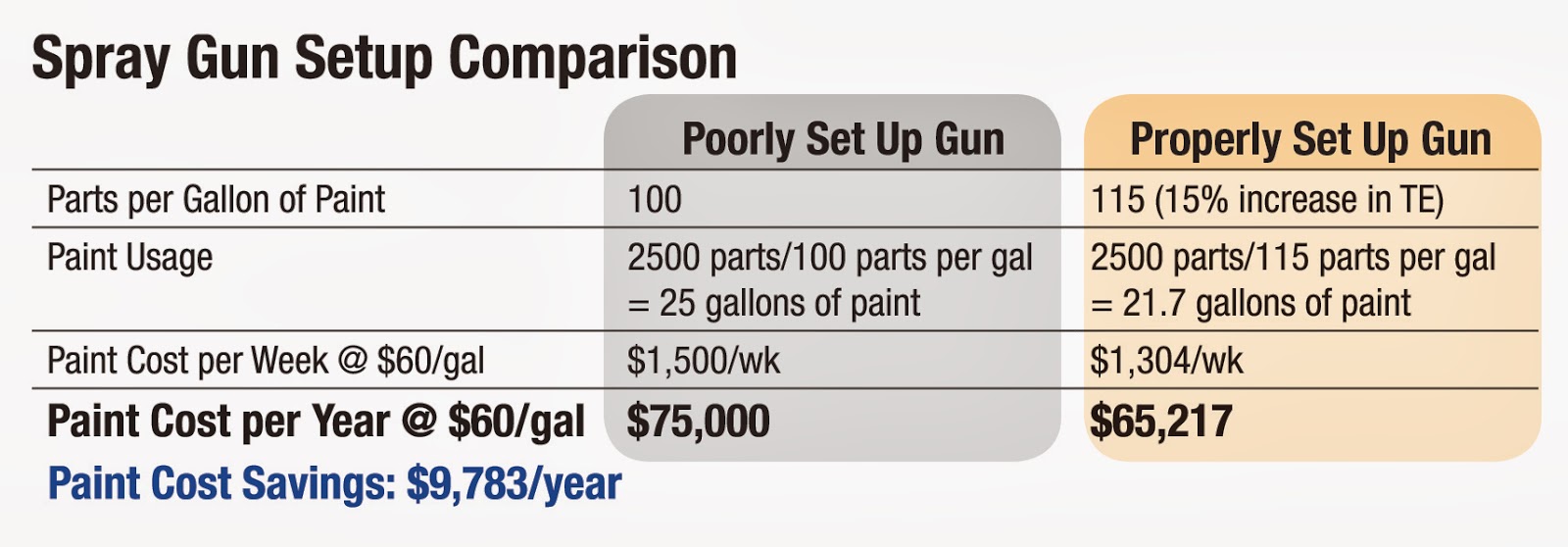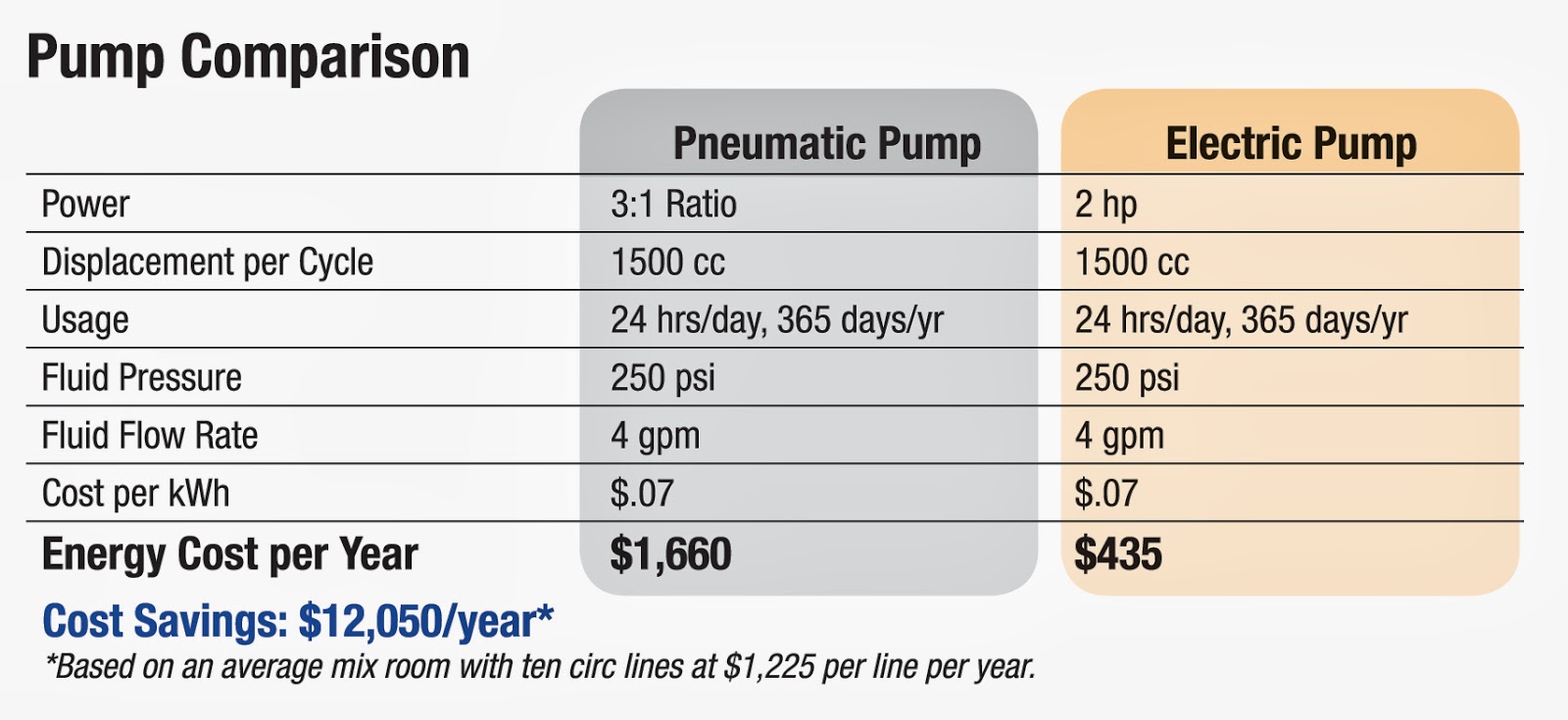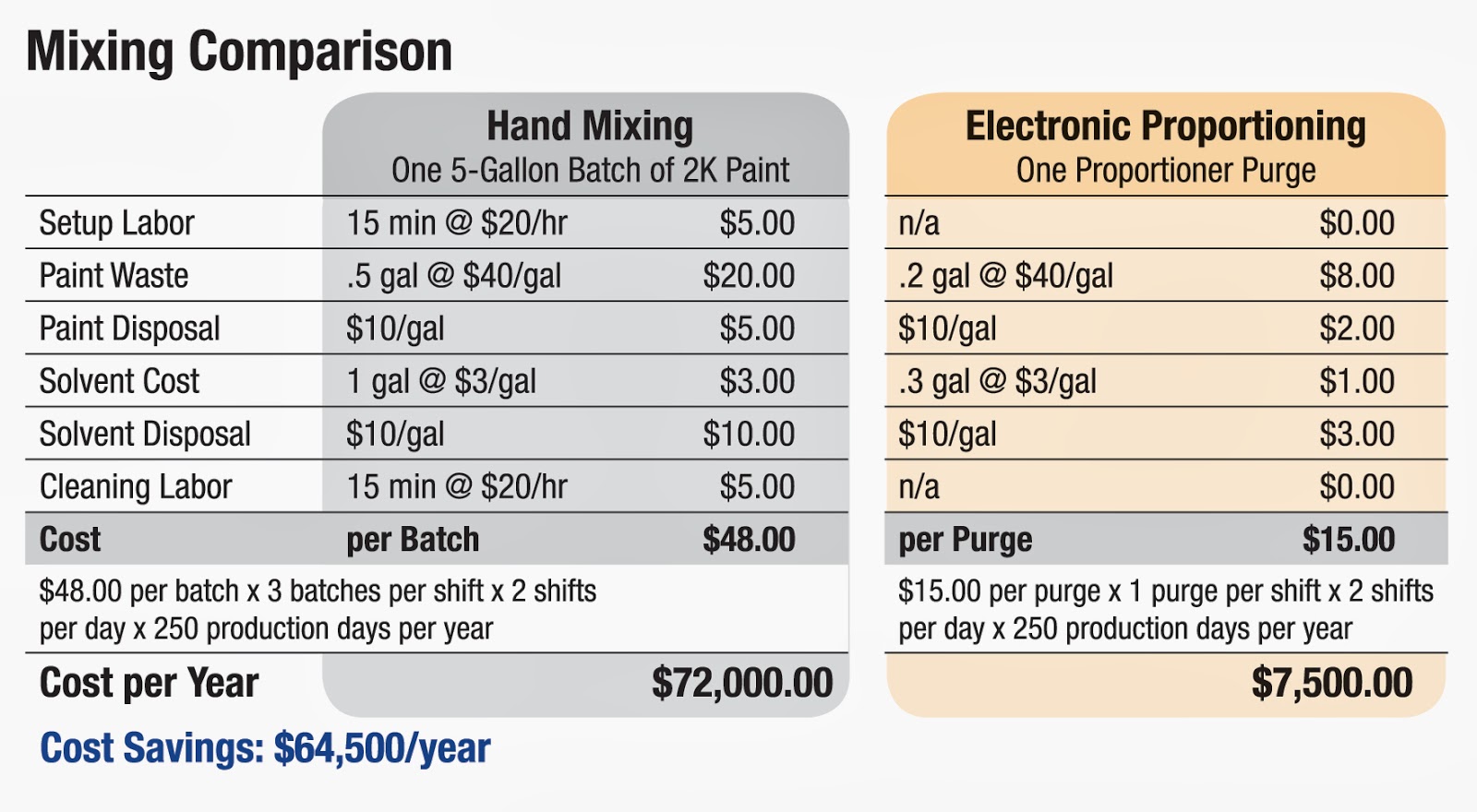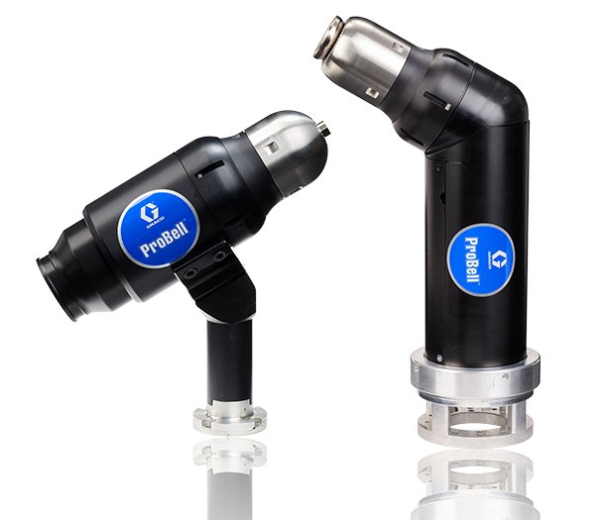Take the Paint Efficiency Audit
Take the paint efficiency audit and assess your current equipment and processes.
As finishing operations look to stay competitive in an increasingly global economy, it’s no surprise that efficiency has become a popular topic. Many companies are looking for effective ways to reduce operating costs and improve profit margins.
Those interested in managing costs can make impactful changes by auditing the efficiency of current equipment, identifying process or equipment improvements and implementing the necessary changes.
Transfer Efficiency Affected by Many Factors
When it comes to spraying parts on a paint line, efficiency improvements can lead to material savings by producing less waste and lower emissions of VOCs. There are many factors that affect transfer efficiency.
Proper gun setup
The proper air pressure and fluid pressure are critical for transfer efficiency. Too much air pressure will cause turbulence in the sprayed material, causing excessive overspray. Too much fluid pressure causes bounce back of material off the substrate, both resulting in reduced transfer efficiency. Using the paint gun manufacturer’s suggested air cap and fluid tip combination for the viscosity of the product being sprayed will provide the best results in finish quality and efficiency.

Size and shape of the part
To improve transfer efficiency, it is important that your spray pattern height matches the part you are spraying. Material blow-by from too large of a spray pattern reduces transfer efficiency. The tip size should be sized to the largest spray pattern height for your parts, but not bigger. It is also important to purchase a spray gun with a fan pattern adjustment knob, so as your part size varies, the operator can adjust the spray pattern height down to match the part size.
Operator technique
Proper operator training can have a big impact on transfer efficiency. Operator spray techniques such as spraying the right distance from the part, spraying parallel to the part and triggering and detriggering at the proper time can affect transfer efficiency by 10% to 30%.
For example, it is important to overlap each successive stroke (e.g. 50% for conventional spraying or 25% for airless spraying) using a crosshatch overlap when required. Triggering the spray gun at the beginning and detriggering at the end of each stroke, is also recommended. This minimizes the lead, and even a small decrease in leading and trailing edges can reduce overspray and result in significant improvements in transfer efficiency.
Applicator selection
Selecting the most efficient spray gun for the intended application is important in optimizing the efficiency of any spray operation. Conventional air spray, compliant, HVLP, air assist and electrostatic all offer excellent benefits depending on the application.

Paint Kitchen Equipment Efficiency
In the paint kitchen, finishing operations, pumps are often the biggest consumers of energy as a result of compressed air consumption. Improving the efficiency of current equipment or switching to hydraulic or electric pumps that use less energy are a few effective ways to reduce long-term energy consumption.
Pneumatic systems are often the choice of most finishing operations because they are easy to install and operate. Because air is often an existing power source in the plant, the upfront cost is typically less expensive.
Hydraulic systems are more cost efficient than pneumatic systems, because they offer much better efficiency of use – about 1/3 of the energy of pneumatic systems. A system using hydraulics can match the power of a pneumatic system, even if the horsepower of the hydraulic system is listed as less than that of the pneumatic system.
With the highest up front expense, electric motors often provide the largest energy savings in a finishing operation. Most notably, they offer direct conversion of electrical energy to mechanical pumping. This not only uses less energy, but it also eliminates the inefficiency of compressed air systems.
Air compressors have ongoing liabilities including leaks, maintenance, and equipment downtime that can also lead to inefficiencies. In fact, the majority of air compressor costs are not from the initial capital investment. The majority of compressor costs come from energy usage in its 10-year lifespan.
Another benefit of electrical pumping is the improved control and automation potential. Pumps can be set up to operate only when absolutely needed. These off production settings greatly reduce or eliminate energy consumption during off shifts or non-peak operating modes.
The following comparison illustrates how switching from pneumatic to electrical pumps can yield thousands of dollars in savings for finishing operations.

Plural Component Mixing
Another area to evaluate for efficiency is the process of proportioning plural component materials. More and more finishing operations are using plural component paint because of its better adhesion, hardness, durability and lower VOC output and oven cure. But in order to be successful with 2K and 3K coatings, the material needs to be mixed at the correct ratio and used before it cures.
One way to manage this process is to use electronic proportioning machines that not only mix the materials accurately, but also mix on demand as you spray them. In addition to saving operators time compared to hand mixing, electronic proportioners reduce waste and contain state-of-the-art diagnostics that can keep manufacturing processes running smoothly and efficiently. In most cases, an electronic proportioning system pays for itself within months of purchase and is well worth the investment.

Facility Assessments and Resources
Even with these large savings opportunities, evaluating long-term cost savings is critical when considering the expense of purchasing and installing new equipment.
Several manufacturers offer facility reviews to help identify product or process improvements. They may also provide other tools, such as return on investment calculators, to help determine if installing new technology is right for your application.
In addition, many utility companies provide resources, and even rebates for manufacturers that install new energy efficient equipment in the plants.
The Department of Energy also has many free tools that help manufacturers through an energy efficiency process, from measuring energy use at specific points in a production line, to determining the best approach to installing more efficient equipment and developing an energy-savings plan. These include the department’s Pumping System Assessment Tool, Compressed Air Systems resources, and many other energy-management resources.
Overall, developing a long-term plan is essential for manufacturers looking to achieve significant energy and bottom-line savings. Operating with the most energy-efficient technology available and proper training on equipment may provide the largest savings. No opportunity is too small, because it all adds up.
Related Articles
Paint Efficiency Audit Shows Huge Savings
Cabinet manufacturer meets production goals with ProMix PD2K Dual Panel Acid Catalyst.
How to Make Your Factory Paint Mix Room Industry 4.0 Ready
Advanced control and interconnectivity are key components to making factory paint mixing rooms Industry 4.0 ready.
Transfer Efficiency Increases 30%
Paint line improves aluminum extrusion finishing, sending a lot less back to touch-up booth.






